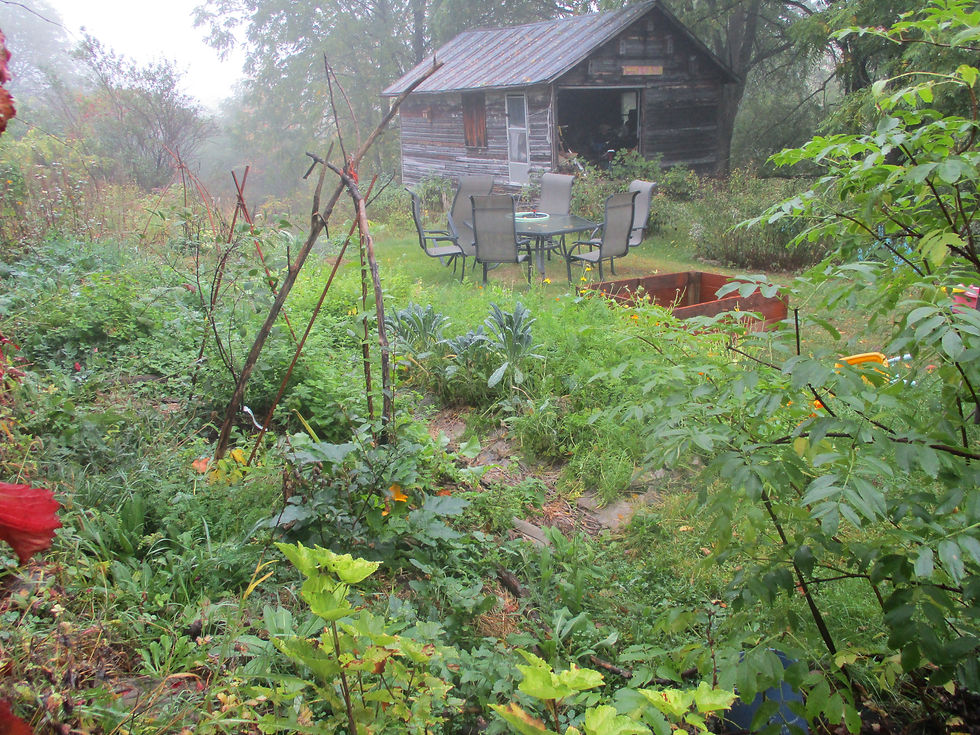My Backyard: A messy abundance
- Laura Crystal
- Sep 23, 2019
- 2 min read
Updated: Oct 11, 2019
Since this site is about creating environmental change "in our backyards" I thought it was only fair to show you my backyard. It's messy, it's lived in and it's my canvas for creating an edible perennial landscape.

Imagine if, when we grew food, we didn't think that tidiness and productivity were more important than anything else. Yes, of course, I want to feed my family but not by destroying natural ecosystems and depleting the soil. I'm willing to sacrifice some productivity to create other forms of abundance. And finding the right balance is a messy process.
I've begun by planting a diversity of plants. Some of them produce food but others nourish the soil, feed and provide habitat for wildlife, provide nectar for insects, keep away pests and provide medicine for my family.
So far I am growing over 50 useful perennial plants (I actually made a list of them this year to remind myself that I'm making progress). Of those 50, about 30 are edible.
Now, edible does not necessarily mean tasty (some of the plants I grow I wouldn't eat unless I really had to). But many of my edible perennials are surprisingly good!
I'll tell you about some unusual, prolific and tasty plants in later posts.
Although I am still years away from an abundant harvest, I feel that my garden is already abundant in other ways. The diversity of plants in my yard, allows for a diversity of other life. I would rather that some of that life stayed away (yes, I'm talking to you, veggie munching rabbits!) but I understand that every species is important, even the annoying ones. I love seeing frogs, birds, butterflies, bees, wasps, dragonflies, grasshoppers, moths and other unknown insects when I'm planting, harvesting or sitting outside. My soil is crawling with life too. Worms, bugs and likely loads of healthy bacteria, some that actually fix nitrogen into the soil, lurk in the murk in my garden beds. Recently, mushrooms have been popping up all over my yard. That means that a network of mycelium (thin threads that make up the majority of the fungus) is beginning to form in the soil, linking the roots of many plants (like an underground internet).
My garden is coming alive! Yes, yes, I know that all gardens are alive but I'm trying to create a healthy ecosystem that not only provides abundance for me, but allows a diversity of life to thrive. It's messy, yes. But it's abundant in so many important ways.

Comments